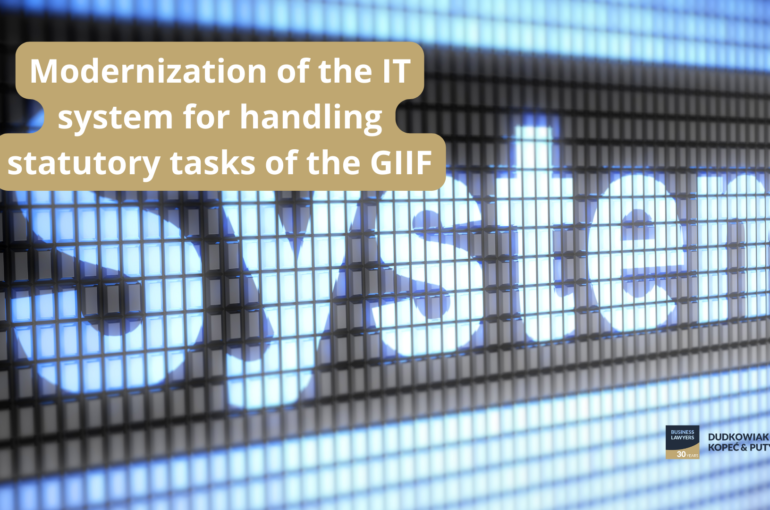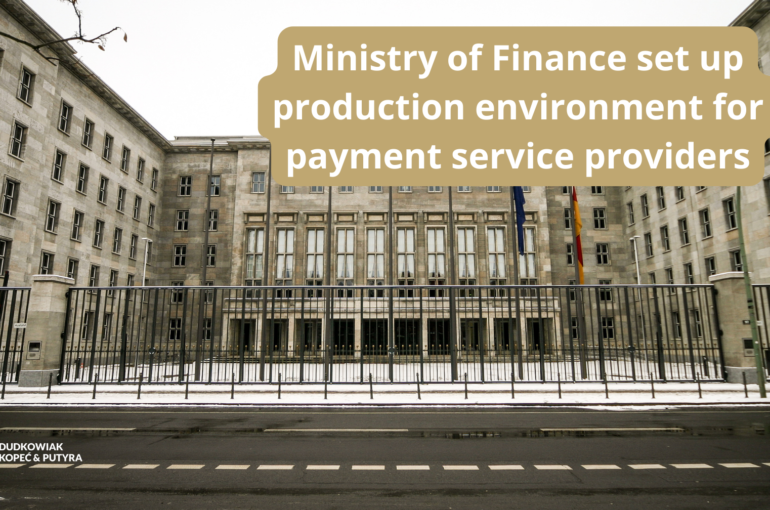Types of cryptoassets – characteristics and obligations of issuers based on MiCA and the Draft Law on Cryptoassets
The first package of regulations of Regulation 2023/1114 on cryptocurrency markets (hereinafter: “MiCA”) will soon enter into force as of June 30, 2024. The newly-enacted regulations will have a direct impact on the European Union cryptocurrency market, as they will affect asset-linked token issuers and e-money token issuers. In this post, we discuss what is the breakdown of cryptoassets according to the MiCA, as well as what are the obligations of their issuers.
Types of cryptoassets
According to the MiCA Regulation, cryptoactives are “digital representation of value or right that can be transferred and stored electronically using distributed registry or similar technology“. From this general definition derive the different types of crypto-assets, viz:
- Tokens that are e-money (EMT) – a type of crypto-asset that is supposed to maintain a stable value due to the fact that it is pegged to a single official currency. This category includes so-called stablecoins.
- Asset-linked tokens (ART) – a type of cryptocurrency that is not a token that is electronic money and that is intended to maintain a stable value by being linked to another value or right or a combination thereof, including at least one official currency.
- Utility tokens – a type of cryptocurrency that is intended only to provide access to a particular good or service provided by its issuer.
Since the regulations that are coming into force apply only to EMTs and ART, we do not describe the obligations for utility tokens in this post.
Obligations of issuers of asset-linked tokens
First of all, it should be noted that making a public offering of an asset-linked token can only be done by:
- legal entities with the appropriate authorization (regulated in Article 21 of the MiCA)
- credit institutions.
Application for authorization
The application for authorization of entities that intend to make a public offering of ART, or that will apply for admission to trading of such tokens, must include, among other things, the following information:
- the issuer’s articles of incorporation or articles of association
- a program of operations outlining the business model
- a legal opinion stating that the asset-linked token does not qualify as an EMT or other cryptocurrency exempt from the application of the MiCA
- evidence that the associates, shareholders and managers are of sufficiently good repute and have adequate knowledge, skills and experience
- information document on the issued cryptocurrency (whitepaper)
- description of the issuer’s business continuity policy
- description of internal controls and risk management procedures, etc.
Quarterly reporting obligations
Upon favorable consideration, issuers of ARTs whose issuance value exceeds EUR 100,000,000 are required to report quarterly information to the competent supervisory authority on:
- the number of token holders,
- the value of tokens issued and the size of the asset reserve,
- the average daily number and average total daily value of transactions in the relevant quarter,
- the estimated number and value of transactions in the relevant quarter related to its uses as a medium of exchange in the single currency area
If the issuer ceases operations for 6 consecutive months or has not used the authorization for 12 consecutive months, the competent authority shall revoke the authorization.
Obligations in ongoing operations
In the event that an issuer revises its published disclosure documents for ART-linked tokens, the issuer must notify the competent authority of its home state at least 30 business days before the scheduled changes take effect.
In their day-to-day operations, issuers of asset-linked tokens have an obligation to act honestly, fairly and professionally in accordance with the best interests of the holders of such tokens. In addition, the MiCA requires issuers to publish a cryptocurrency information document on their website.
In terms of marketing activities, issuers must comply with the following requirements:
- clearly mark materials that are marketing in nature
- information contained in marketing materials must be reliable, clear and not misleading
- the information must be consistent with the disclosure document
In addition, issuers must implement and maintain effective policies and procedures to identify, prevent and manage conflicts of interest and disclose conflicts of interest that occur, e.g., with the issuer’s shareholders, board members, employees.
Own funds requirements
The ART issuer must maintain its own funds at an appropriate level throughout its operations – the amount must be at least equal to the highest of the amounts:
- EUR 350,000
- 2% of the average amount of the asset reserve
- ¼ of the fixed indirect costs from the previous year of operations
In addition, the MiCA describes in quite some detail the obligations of holding an asset reserve and the structure and management of such a reserve.
What must the whitepaper on the issued ART cryptoasset contain?
Any entity wishing to make an ICO of a token related to a crypto-asset must prepare an information document, the so-called whitepaper containing, among other things, the following information:
- information about the token issuer
- information about the token
- information on the public offering of the asset-linked token or its admission to trading
- information on the rights and obligations associated with the asset-linked token
- information on the underlying technology
- information on risk
- information on the asset reserve
Obligations of issuers of tokens that are e-money
Unlike ART issuers, an EMT issuer can only be a credit institution or e-money institution that has filed a cryptocurrency disclosure document and published it.
Issuers of e-money tokens shall, at least 40 working days before the day on which they intend to offer these e-money tokens to the public or apply for their admission to trading, notify the competent authority of this intention.
The main requirement, therefore, is to customize and publish a whitepaper which, in addition to the elements listed above – specific to ART issuers – must also include:
- a clear warning that a token that is e-money
- is not covered by investor compensation schemes under Directive 97/9/EC;
- is not covered by deposit guarantee schemes under Directive 2014/49/EU
- a summary that, in concise and non-specialized language, presents key information about the public offering of an e-money token or its planned admission to trading
- a warning regarding the summary that:
- should be regarded as an introduction to the cryptocurrency information document;
- that a prospective holder should make any decision to acquire e-money tokens based on the contents of the entire cryptocurrency information document and not solely on the basis of the summary;
- the public offering of an e-money token does not constitute an offer or inducement to acquire financial instruments, and that any such offer or inducement may only be made through a prospectus or other issuance document in accordance with applicable national law;
- the information document for the cryptocurrency does not constitute a prospectus as referred to in Regulation (EU) 2017/1129 or any other issuance document under Union or national law.
In the event that the issuer of an e-money token has obligations to prepare a whitepaper, such issuer and members of its administrative, management or supervisory body shall be liable to the holder of such e-money token for any losses incurred as a result of such violation.
Investment of funds received in exchange for tokens that are e-money
According to the MiCA Regulation, at least 30% of the cash received for EMT must always be deposited in separate accounts with credit institutions. The remaining funds, on the other hand, may be invested in safe, low-risk assets denominated in the same official currency as the currency to which the e-money token is linked.
Summary
The MiCA will soon revolutionize the cryptocurrency market throughout the European Union and will force the adjustment of activities carried out not only by crypto-related service providers, but also crypto issuers.
If you are looking to adapt your business to the new regulations, or are considering entering the cryptocurrency market full of new opportunities – contact our lawyers, we will be happy to help.


